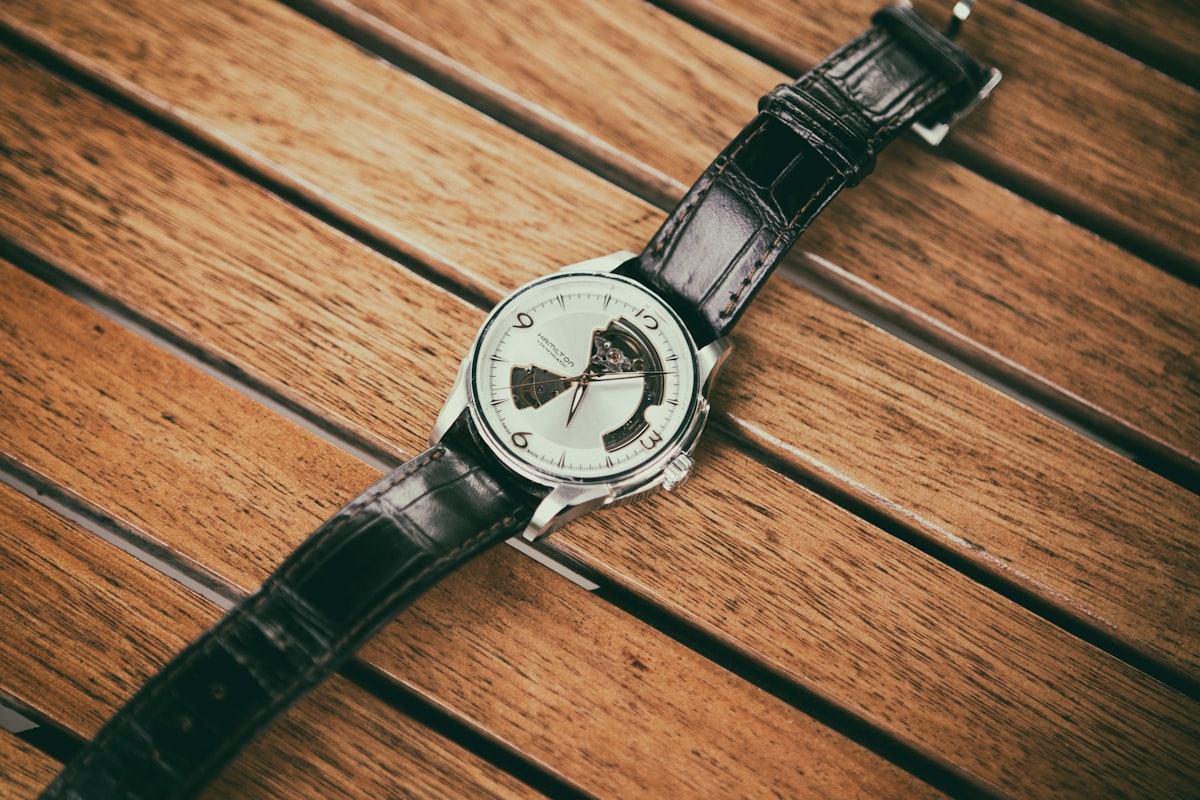

The Hamilton Watch Company has a rich history, dating back over a century. Founded in Lancaster, Pennsylvania in 1892, it's a badass American brand–named after Alexander Hamilton, one of the United States' o.g. founding fathers.
Hamilton (the watch company, not the guy who infamously bit the dust in a duel with the Vice President) originally produced pocket watches, but eventually expanded into wristwatches and other timepieces, as all good watchmakers who started out rocking chains are wont to do.
These days, Hamilton is made in Switzerland, which only increases its cachet. And I still haven't seen the play.
At The Forefront of Watchmaking

In the early 20th century, Hamilton was at the forefront of the American watchmaking industry. The company produced a range of timepieces for various markets, including industry-specific standouts– railroad watches for conductors and precision chronometers for pilots, for example.
During World War II, Hamilton kept it on the patriotic tip and produced military watches for the United States and its allies. These rugged, reliable timepieces were essential for keeping track of time in the field, as those trying to coordinate military actions are wont to do. And many are now highly sought after by collectors.
In the 1950s and 60s, Hamilton became known for its innovative designs and cutting-edge technology. The company introduced the first electric watch, the Hamilton 500, in 1957, and the first LED watch, the Hamilton Pulsar, in 1972.
The First Electric Watch: The Hamilton 500
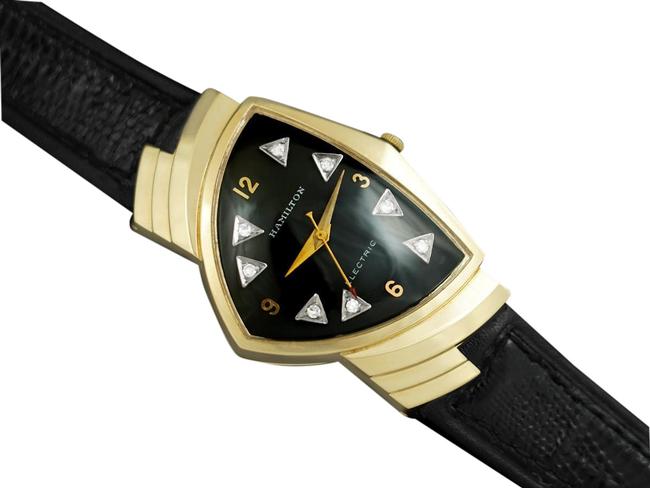
The Hamilton 500 was powered by a tiny motor that was activated by a little bitty battery, which eliminated the need for the traditional mechanical winding mechanism. This made the watch much more accurate and reliable than mechanical watches, which were prone to error due to variations in winding tension.
The Hamilton 500 was also much thinner than mechanical watches, which theoretically made it more comfortable to wear. It was initially marketed as a luxury timepiece and was priced accordingly.
Today, many watches are powered by batteries or by kinetic energy, which is generated by the movement of the wearer's wrist. However, mechanical watches are still popular with collectors and enthusiasts, and many luxury watch brands continue to produce high-end mechanical timepieces.
The First LED Watch: The HAmilton Pulsar
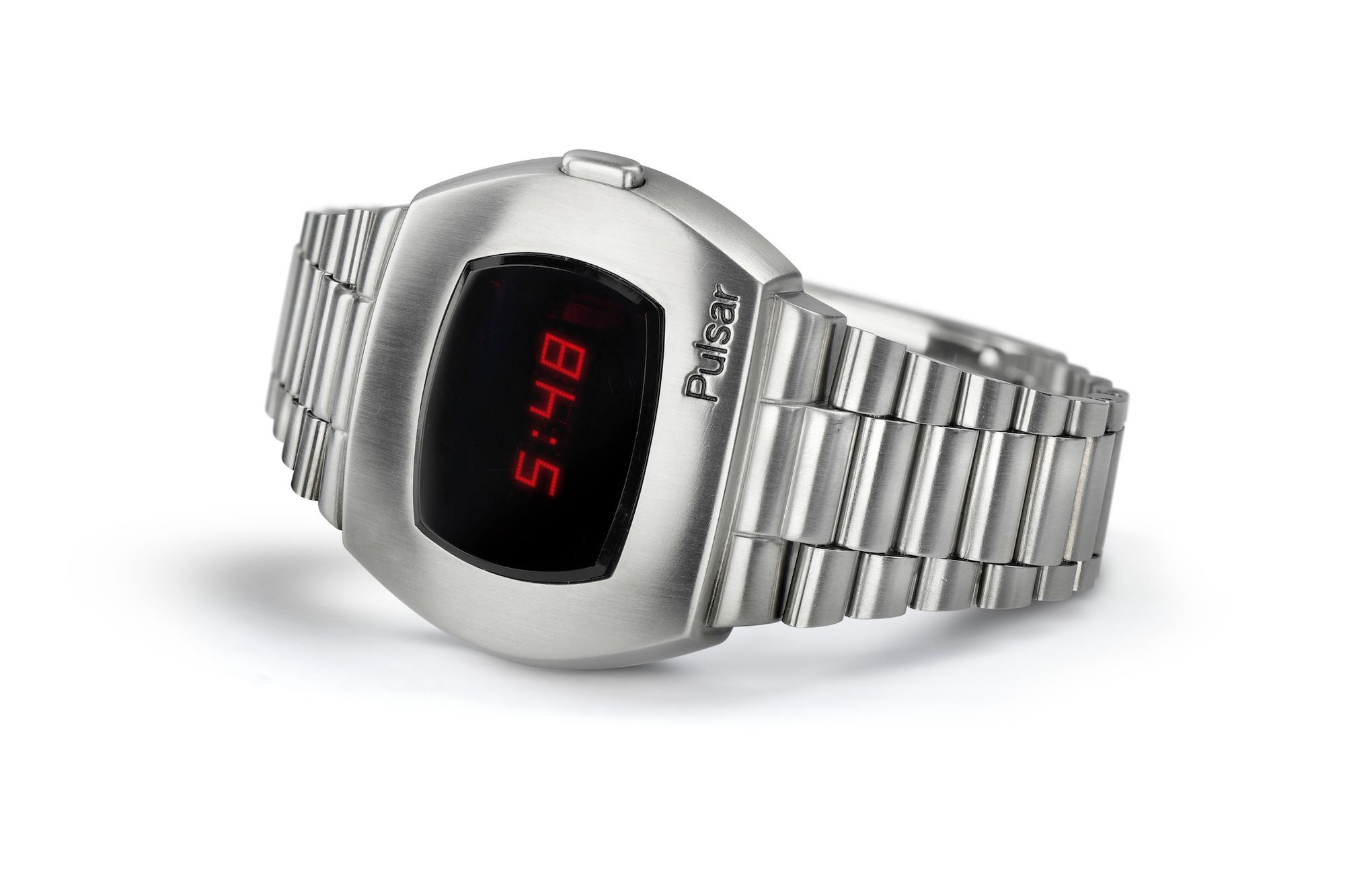
The first LED (light-emitting diode) watch was the Hamilton Pulsar, which was produced in 1972. It was a revolutionary development in the watch industry and marked the true beginning of the digital watch era. It was also kinda sci-fi looking for the time, which added to the whole tech vibe.
The Hamilton Pulsar was powered by a small battery and used a series of light-emitting diodes (LEDs) to display the time. It was the first watch to use a digital display, which made it easier to read than traditional mechanical watches.
The Hamilton Pulsar was initially marketed as a luxury timepiece and was priced at a premium, but as LED technology became more widespread and production costs decreased, digital watches became more widely available and affordable.
Hamilton in Christopher Nolan Films
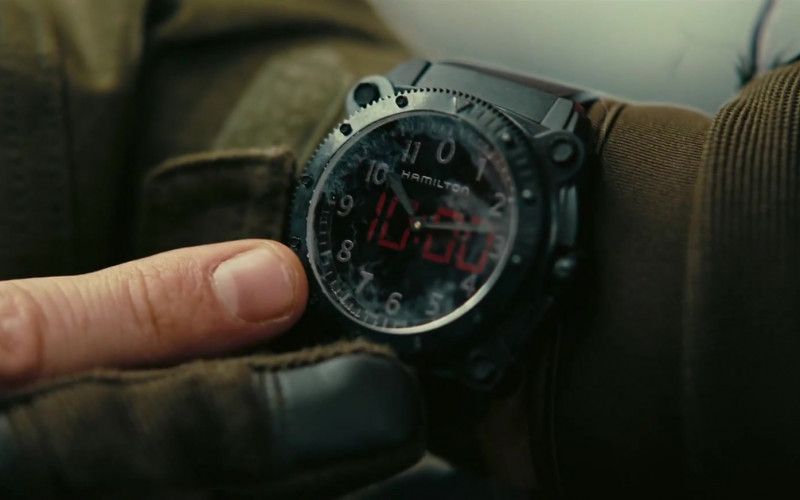
Hamilton watches have made several appearances in Christopher Nolan's films, including Interstellar, Dunkirk, and Tenet. In Interstellar, the explorer played by Matthew McConaughey wears a Hamilton Khaki Field watch throughout the film, and in Dunkirk, several characters are seen wearing Hamilton watches.
In Interstellar, McConaughey's character uses his watch as a tool to help him navigate through the various challenges he faces on his journey through space, including, you know, a black hole and shit. And in Dunkirk, the watches are worn by soldiers and pilots who are faced with life-or-death situations that don't involve black holes but are equally harrowing.
In Tenet, the Hamilton watches are worn by characters who are involved in a clandestine organization dedicated to preventing a global catastrophe. The watches are a key way of keeping track of what the hell is going on (a task that's hard enough for the audience) as the characters navigate through various mind-bending, gravitationally impossible challenges as they try to prevent the end of the world or something.
In addition to their practical uses, the Hamilton watches in Christopher Nolan's films also serve as a symbol of the characters' resilience and determination in the face of adversity. They are a symbol of the enduring power of human spirit and the will to survive, even in the most difficult of circumstances. At least, that explanation sounds good to me.
Hamilton's simple, functional designs are a perfect fit for the action and adventure that are characteristic of Nolan's movies.
Hamilton Watches we love
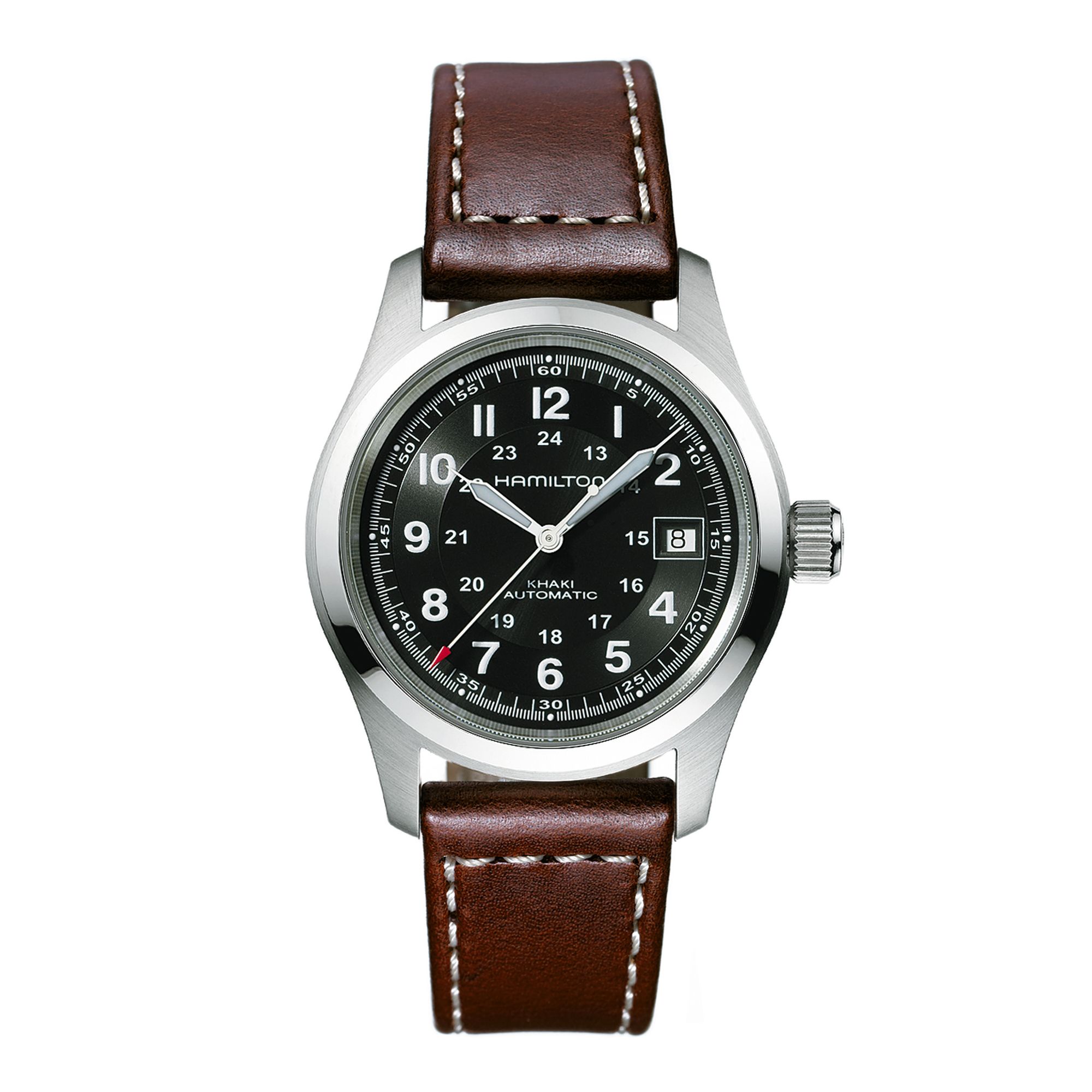
The Hamilton Khaki Field watch is a rugged and reliable timepiece that is designed for outdoor and active use. It is part of the Hamilton Khaki collection, which includes a range of durable and functional watches inspired by the brand's military heritage.
The Hamilton Khaki Field watch is known for its sturdy construction and rugged design. It typically features a durable case made of stainless steel or another strong material, as well as a scratch-resistant crystal to protect the face of the watch. The watch also has a durable strap, typically made of leather or nylon, to ensure a secure fit on the wrist.
In addition to its rugged design, the Hamilton Khaki Field watch is also known for its functionality. It typically has a simple, easy-to-read dial with large numerals and markers, as well as luminous hands to make it easy to read in low light conditions.
Overall, the Hamilton Khaki Field watch is a reliable and functional timepiece that is well-suited for outdoor and active use. It is a popular choice for adventurers, military personnel, and anyone who needs a durable and reliable watch.
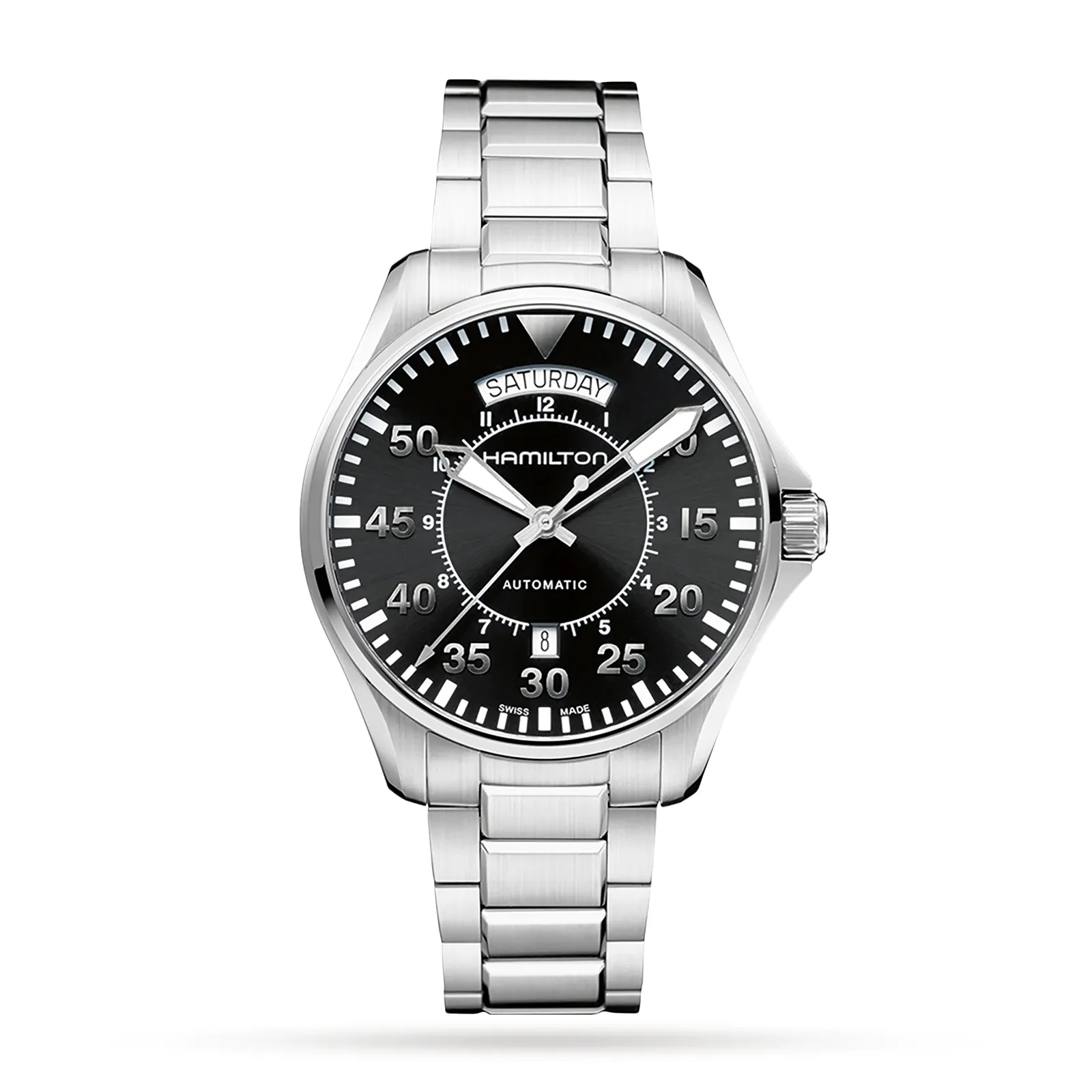
The Hamilton Khaki Aviation watch is a high-performance timepiece designed for pilots and aviation enthusiasts. It is part of the Hamilton Khaki collection, which includes a range of durable and functional watches inspired by the brand's military heritage.
The Hamilton Khaki Aviation typically features a durable case made of stainless steel or another strong material, as well as a scratch-resistant crystal to protect the face of the watch.
Many models also have additional features that are useful for pilots, such as a rotating bezel to track elapsed time, a chronograph function to measure short intervals of time, and a date display.

The Khaki Navy BeLOWZERO iis part of the brand's Khaki Navy collection, which is inspired by the watches worn by naval officers. The BeLOWZERO model is specifically designed to function in temperatures as low as -40°F (-40°C), making it ideal for activities such as winter sports or polar expeditions.
The watch features a stainless steel case and a sapphire crystal, which are both resistant to extreme temperatures and rugged wear. It also has a black dial with luminescent hands and markers, making it easy to read in low-light conditions. The watch is powered by a Swiss automatic movement and has a power reserve of up to 80 hours. It is also water-resistant up to a depth of 300 meters.
In addition to its functional features, the Khaki Navy BeLOWZERO has a stylish and classic military-type design. It is available with either a leather or a stainless steel bracelet. Overall, the Khaki Navy BeLOWZERO is a high-quality, reliable, and fashionable timepiece that is suitable for a wide range of cold-weather activities.
Hamilton makes very very nice watches.
Today, Hamilton is still a leading watch brand known for its stylish and innovative timepieces. The company has a strong presence in the luxury watch market, and its watches are worn by celebrities and collectors around the world.
Whether you're looking for a classic dress watch or a cutting-edge sports watch, Hamilton has a timepiece to suit your style. This is a great brand to get into if you are upping your watch game, and you want something that will last for years, but doesn't break the bank like some of the luxury brands.

